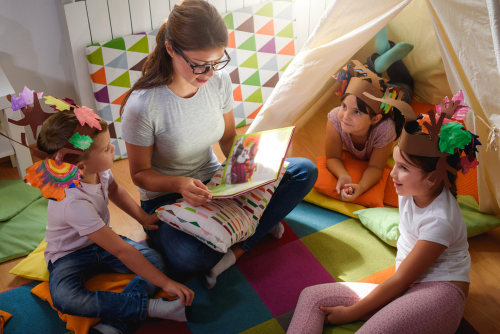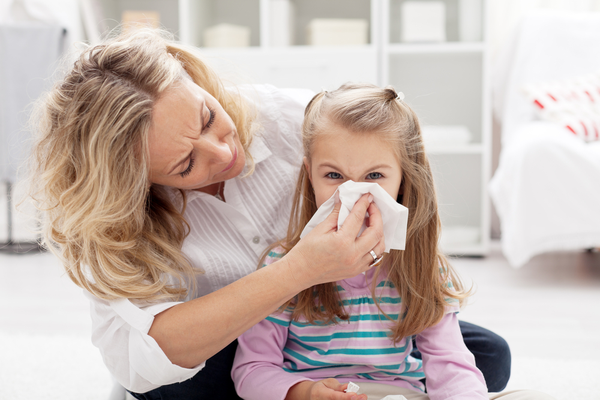Practical, hands-on learning experiences are an essential part of your early childhood education course. This is why practical placement is incorporated into early childhood education and care courses – to ensure that every learner has the opportunity to apply everything they’re learning and get real-life knowledge in the workplace.
The practical placement hours of a course allow you to gain first-hand experience as an educator, exploring and expanding what you know about early childhood education and finding your feet in the work environment with children.
Like anything new, heading into an early childhood education setting and commencing your work placement might be a little overwhelming or nerve-racking. That’s okay — it’s normal to be nervous! The best thing you can do in this situation is be prepared. So how do you prepare for practical placement? We’ve gathered some useful information about getting ready to head into placement feeling ready!

What to expect on practical placement
It’s good to be aware that practical placement is generally a positive experience, so you can actually expect to enjoy your time working in an early learning setting alongside educators and children. Your roles and responsibilities will be allocated by the early childhood education provider you are doing your practical placement with, but most of the time you will be given the opportunity to work in a few different spaces around the service. This could mean working with young babies on some days and older children on other days. You might help with outdoor play, art and craft time or reading books, just to name a few areas.
Arranging the practical placement is usually a joint effort between you and our practical placement coordinator. You might have a pre-existing role with an early learning centre within which you would prefer to undertake your placement, which can be arranged. Alternatively, we can help to set up your placement with a service that will suit you. Don’t worry — the support you need to get your placement organised is available to you with Selmar.
Before you begin: getting prepared
Being prepared is the key to getting off to a good start on your practical placement. Preparation can mean a lot of things, from getting your Working With Children’s Check (VIC and NSW) or blue card (QLD) sorted in advance, to knowing where to go when your first day comes along.
Thankfully you will have a pre-placement information session that will fill in any gaps in your knowledge prior to commencing. Your practical placement coordinator is able to help with any questions you may have, plus your trainer will continue to support you through placement. In fact, your dedicated trainer will even visit you in your early childhood service while you’re on your practical placement.
Another element of getting prepared for placement comes down to organisation. For example, know where you need to go and how you are going to commute. Plan carefully so you arrive on time and put your best foot forward.
What you will need for placement
The early childhood education service you attend for your practical work placement should provide you with a placement handbook or set of guidelines. This will cover dress code, confidentiality policies, social media and more so that you know what is and is not acceptable. Reading through and double checking anything you’re unsure about in advance can help you to feel prepared.
Generally, most of the guidelines and policies will be fairly straightforward, but if you have any queries make note of them and ask your trainer, placement coordinator or service contact before you start so you feel confident right from the beginning. If there is a uniform to be worn the service will provide this to you, otherwise you are likely to simply need to dress comfortably and practically such as your Selmar placement polo shirt with shorts or pants.
How to shine during your practical placement
For some learners, practical placement leads to long term employment. So how can you shine while on placement? There are many things you can do to excel as a learner during work placement. Asking questions is a good place to start. Not only does this help you gain more information and learn faster, it also shows that you have a keen interest in the sector and the service you are working with. While you may feel a little nervous, do your best to actively engage with children and take initiative while on the job. It goes without saying that following instructions and completing tasks in a productive manner are important too.
To help learners really get the most from their practical placement, Selmar provides you with a practical placement journal. This enhances the learning experience, promotes self-reflection and enables learners to track their own progress and see their improvement throughout their course. Keep your practical placement training journal up to date to help reach your full potential through your work placement.
Being COVIDSafe during placement
In light of the coronavirus pandemic, there are a few extra precautions to take and be aware of when undertaking practical placement in early childhood education. While these infection control protocols vary in different areas and are subject to change depending on the current COVID-19 situation in each location, it’s important to be up to date on best practice when it comes to minimising risk of infection, illness and its spread.
Early childhood education services will have a COVIDSafe plan in conjunction with their systems and procedures around illness. Some vital points to note are that if you have any symptoms of illness be sure to notify your service and trainer and stay home when you are unwell. Regular handwashing has always been a priority in centres and now more than ever. As with all things, if you’re in doubt about anything pertaining to infection control while on placement, don’t hesitate to ask.
Level up your learning with practical placement
Practical placement is a highly valuable component of our early childhood education courses. Learners gain vital experience and get the chance to apply the theory they have been learning in a real-life setting.
With our supportive team backing you all the way, your practical placement will make you more excited than ever to be a part of this rewarding sector.
If you want to learn more about practical placement, get in touch.



